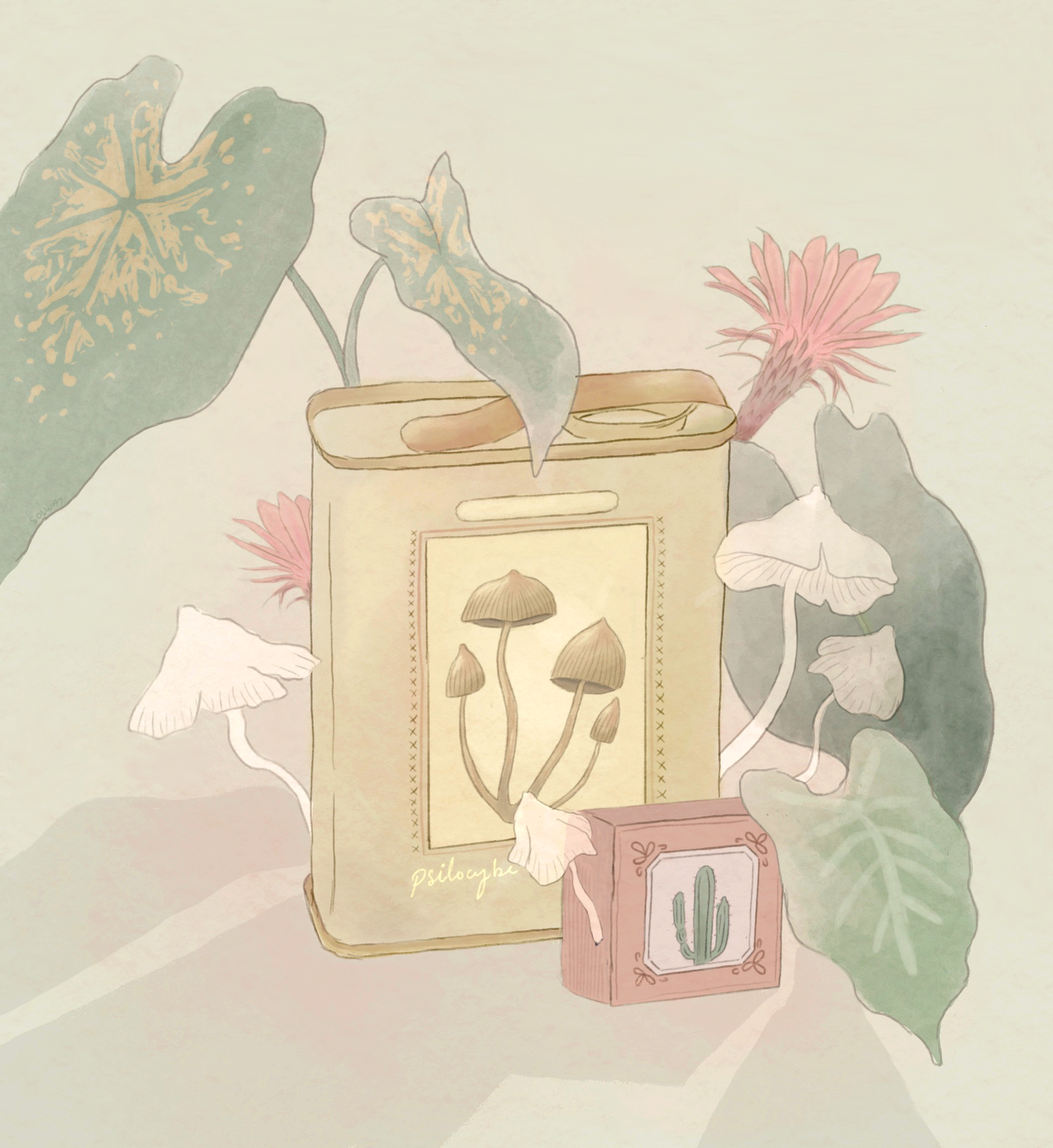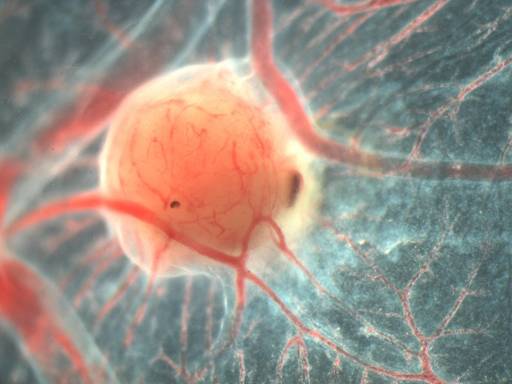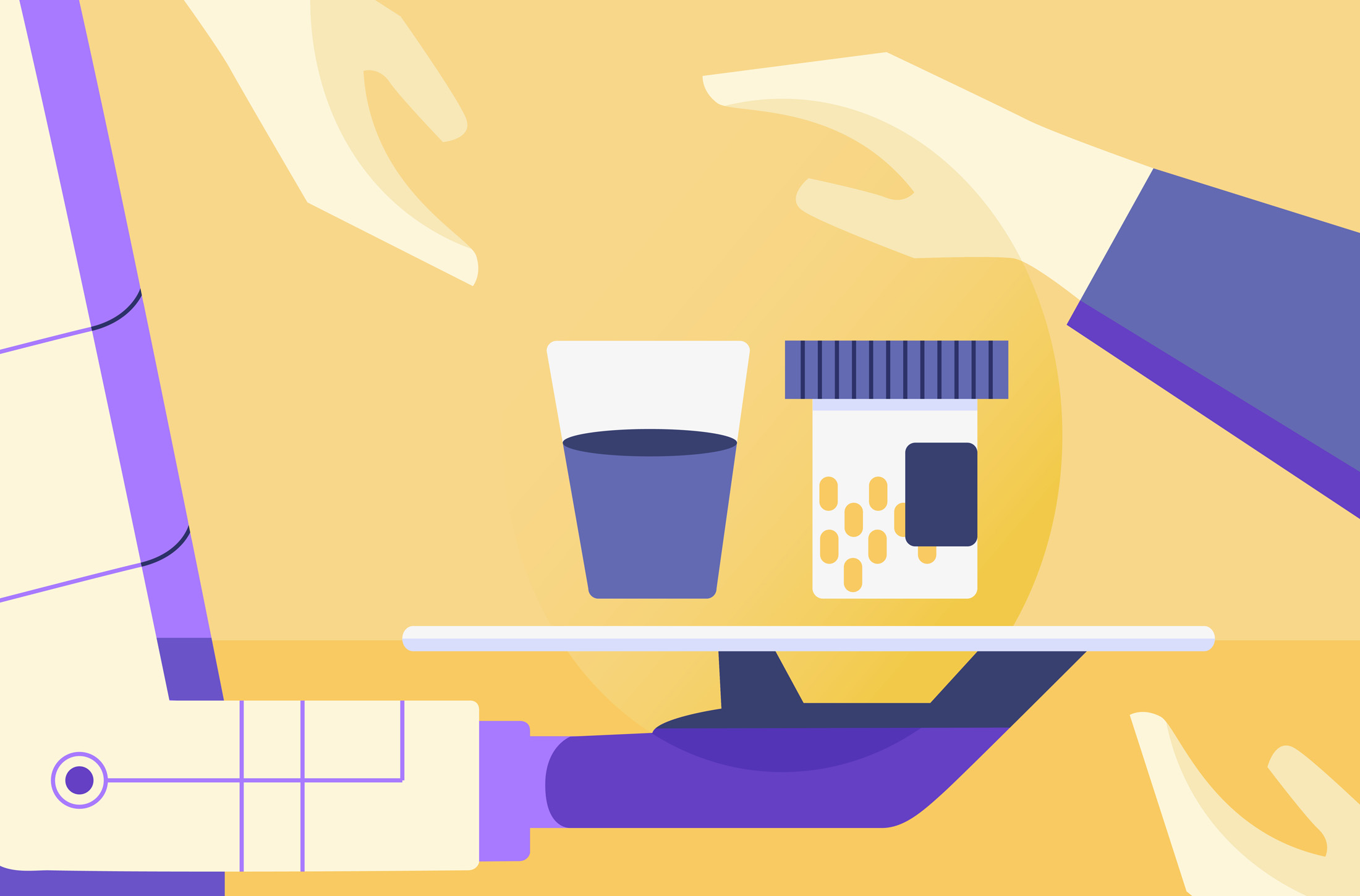Psychedelics Have Positively Impacted Mental Health in Canada—What Else Will They Change?
Inner experience.

On the poles lining the streets of Vancouver are advertisements for magic mushrooms in big , blocky letters, presented as if they were promoting a moving service or piano lessons. Even for the famously progressive West Coast city, the posters are surprising. But their appearance signifies a marked shift in the culture around psychedelic medicines in Canada, one that involves a century-long debate around its therapeutic, commercial, and recreational role, and to many the most accepted of the wide range of previously illegal substances now becoming mainstream. As these substances become more accepted by the medical community, the question of their entrance into wider society is becoming more pressing, which some people are capitalizing on.
In the hazy wake of the cannabis boom, investors like Peter Thiel are going all in on the rising star of mass-marketed psychedelics, which after a series of key legal victories in the United States are poised to enter the market in a more open, albeit highly regulated, way. Executives fly to South America in hopes of meditating their way to microchip success. All over the internet, brands with sleek, millennial-facing packaging advertise various “microdosing” products. Microdosing with psilocybin, the chemical that makes magic mushrooms magical, is a newly trendy habit that promotes routinely taking small doses of psychedelics to experience relief from depression, provide energy, increase pleasure, and work smarter, among a host of other benefits. But underneath this phenomenon is decades of manoeuvring inside the government, psychological, medical, and underground communities.
The reasons for this “psychedelic renaissance” are manifold: general destigmatization of drugs postcannabis; the growing dissatisfaction with diagnostic and prescriptive solutions for mental health; the slew of more “official” outfits getting involved, prompting a cycle of legitimation as approvals pile up and packaging gets sleeker due to consumer confidence in corporate operations. And during COVID, there were so many people at home, with nowhere to go and no new stimuli, that the appeal for psychedelic trips may have added to the growing interest. Increased availablity has helped.
However, psilocybin is still illegal under Canadian law, despite the efforts of some provincial governments like that of British Columbia pressuring federal leadership to change drug policy. In late 2020, the federal government finally allowed limited treatments for people with depression, so for now, it is up to the few who have experimental permission to lead the way.
Advocacy from people like Trevor Millar and Gillian Maxwell, co-founders of the Canadian Psychedelic Association, has been essential in stripping away the laws and connotations that have stifled innovation in psychedelics for generations. The first laws were passed against them in the 1960s, and then again as recently as the 1996, when Canada passed the Controlled Drugs and Substances Act modelled on the United States’ precise “degrees” or “schedules” of illegality for specific substances from cannabis to heroin. The CPA, as well as the well-established Multidisciplinary Association for Psychedelic Studies (MAPS) and its Canadian branch, offer essential resources for anyone trying to learn more or enter the world of psychedelic-based treatments and the communities formed around them, and have advocated tirelessly for MDMA as a treatment for severe depression and PTSD.
“I think a really important part that we have started to play is in conversation with the authorities who will be putting into place rules and regulations,” says Maxwell, whose career was influenced by her advocacy for Insite, the first legal supervised injection site in North America, founded in 2003. Since then, drug policy has shifted, glacially at times and at a rapid pace at others. The well-respected John Hopkins has a centre for psychedelic research, and in 2012, The New York Times published an article about the use of psilocybin to ease anxiety among people on their deathbeds—a right granted to four Vancouverites in 2020 through the efforts of the nonprofit advocacy group TheraPsil.

Photo by Kelly Sikkema via Unsplash.
“There is a very vibrant and strong community that’s been working for many years,” Maxwell says. “Many people are using these medicines to help people, but it’s completely unregulated, and so what we’re doing is bridging that group from bringing them into connection with the authorities.”
Psychedelics’ appeal is clear. Stress levels are rising, people are isolated, and psychedelic treatments allow them to get out of their “default mode network” or the unique ways each of us conceptualizes the world: the well-worn path of our neural habits connected to the circumstances we all find ourselves in. Our ruts. It’s remarkable the simplicity of the aims and almost tragic the lengths that people, spit out by an often-mechanical and depersonalized medical system, go through to get relief. In a highly individualized society, highly individualized treatments are often necessary.
But the effects can also be interpersonal and, importantly, measurable, suggests Dr. Zach Walsh, a professor of psychology at UBC and member of the advisory council at Numinus, a network of advocates that connects people with providers of these therapies. The chief medical officer at Numinus is Dr. Evan Wood, a big name in advocacy and the founder of British Columbia Centre on Substance Use.
Walsh confirms that psilocybin limits both recidivism and partner violence. “Which is kind of amazing,” he adds, “because most substances are risk factors and not protective factors.”
The increased “emotional regulation” and psychedelics’ protective factors in these experiments could mean a shift toward a culture oriented around these substances, compared to substances with more proven harm, could have widespread effects.
Dr. Michael Verbora, whose career has been oriented around clinical cannabis use for pediatric patients of epilepsy and cancer, has also seen marked improvements. His patients are united in a desire to get better, and they have. Verbora works as the chief medical director for Field Trip Health, a publicly traded company that focuses on psychedelic therapies throughout North America. In his activity with Field Trip, he shares Walsh’s dream to train a new generation of psychologists in the practices around therapeutic psychedelic use. He has seen as much as a 50 per cent reduction in symptoms from patients who had little success with more standard treatments for mental health disorders. “The key is really teaching our therapists to be adaptable to the situation,” he says. “And I think it’s still going to be messy no matter what, because humans are so unique.”
As the studies pile up, industry is gearing up to meet the expected demand for these new paths to mental health. According to Ronan Levy, co-founder of Field Trip Health, a version of widely available psychedelic therapy is achievable. “We’re the home depot for mental health,” Levy quips. “You can do it; we can help,” which points toward a more patient-oriented and collaborative view of mental health treatment. “We really focused on doing good medicine and showing really good results,” he continues. “These treatments are like 10 years of therapy in an afternoon.”
But, like any underground thing that goes mainstream, long-time activists are skeptical of business’s role in something they view as a holistic medicine. “If you can’t raise $100 million and get the right C suite cannabis company, you’re pushed out of the game,” says Millar, who is also a social entrepreneur. A constant criticism of the cannabis boom has been a pushing out of small producers in favour of bigger conglomerates that have the money to pour into bringing production up to the standards of smaller producers.
What’s clear is that accessibility must be kept top of mind. For Levy, this means changing how these drugs are consumed as well as the scenarios in which they are consumed. While therapeutic sessions led by trained individuals are an important part of these treatments, medical professionals’ time is expensive, period. But Field Trip hopes to alleviate these costs by developing synthetic versions of psilocybin, prospectively called FT-104, to create doses with shorter sessions to make the experience more affordable.
According to Millar, such steps will be necessary to get these products up to federal government and consumer standards. “We’re not naive. We understand that if we’re going to have these substances really reach the mainstream, they’re going to have to go through a very expensive drug development process, and it’s going to take a lot of money to make that happen,” he says.

The sleek, consumer-friendly packaging of Schedule35.
In the meantime, the increasing availability of more recreationally oriented psychedelic products, which operate in a legal grey zone, are making the issue more public. While the major focus should be on the great work being done underground and now above board by psychologists and advocates, it’s hard to ignore the rush of cool, minimalist packaging and reports of productivity coming down the pipeline.
In my research, I tried some of these microdose products, from both Instagram-popular Schedule35 and B.C.-based Form and Fungtion, which provide slickly packaged products. The effects were consistently mild, but the semiregular “doses,” all less than 500 milligrams and mixed with all manner of holistic herbs and spices, did help with my pandemic pet project to finally quit smoking. I won’t give it all the credit, it was a gruelling process, but these products did help take my mind off cigarettes and allow me to stretch my brain in a way that noticeably reduced my anxiety. They also made me much more sensitive to the comments of my loved ones and peers, which makes me skeptical about their efficacy as a “productivity” drug. But the experience of letting go of stress on Saturday mornings was overwhelmingly positive. Having a microdosing schedule helps outline the effects and benefits.
Maybe productivity and mental health are too closely associated; maybe we aim for both and get neither. It strikes me that my own experience of this microdosing trend could signal a more general shift in the culture toward what has been called “the creative economy.” Psychedelics are being embraced as a way to make it run a bit more smoothly and, especially with the mass of negative mental-health effects of the pandemic, treat the symptoms of growing social isolation and digital burnout this form of economy creates. In this, it’s no wonder some of the first mutterings about the nootropic potential of psychedelics in contemporary discourse came from the Peruvian escapades of tech gurus from Silicon Valley, where the digital first supplanted the physical and where productivity must be kept at a constant, unrealistic high.
However, the exact position of this debate seem to be up in the air. The shift in packaging signals growing market viability, all the signs point toward broader social acceptance, and for years we’ve heard stories of Silicon Valley types flooding to Peruvian shamans to try and capture that Jobs je ne sais quoi.
But Derek Chen, co-founder of Toronto-based Schedule35, says people come to the company for many different reasons. “Half are users looking to see a small incremental everyday change, whether it be their mood, focus, creativity, or energy,” Chen says. “The other half would be looking to tackle deeper issues with positive thoughts, gratitude, self-healing, and self-understanding.”
Despite the rush to commercialize, Dr. Verbora believes the effects of microdosing mostly for benefit society. “You’ve just got to be cognizant of what your goals are, know what your outcomes are,” he says. “But hey, self-exploration is a beautiful thing; I think recreation is also a beautiful thing.”
It’s also important to contextualize Indigenous knowledge of psychedelics in our conversations about the future of the integration of drugs like psilocybin in our shared culture. Some activists have raised concern about outsiders encroaching on sacred peyote traditions in the American Southwest.
Elsewhere, activists like Dr. Monnica Williams are advocating for equitable use of psychedelics across gender, class, and race. Williams’ practice and writing looks at how psychedelics can be used to help heal the trauma of generations of racial oppression. Chacruna, the Institute for Psychedelic Plant Medicines, recently facilitated a series called “Empowering Therapists of Color as Psychedelics Go Mainstream,” which highlights the work of minorities working in the field and acknowledges that the history of psychedelics in North America has, by most accounts, been largely whitewashed.
Also important going forward is the conversation around the judicial system, which still prosecutes and imprisons people for having and selling psilocybin. Another critique of cannabis legalization has been the unequal way it has affected society: some get rich, while others remain behind bars. When confronted with some of these issues, talking about microdosing as a way to get ahead at work seems silly, though it’s to be hoped such a lighthearted view of these substances can be shared by all members of society and not just those, like myself, working behind a computer screen in the “creative economy.”
We all have opinions on what role psilocybin and other psychoactive substances should have in mainstream culture. What’s true is that these substances have positive effects that outweigh the negatives; real advances in mental health can be made. As the opioid epidemic ramps up and suicide rates rise, it’s time to get serious about solutions beyond the status quo. And, as the quest for much-discussed mental health continues, we need to make sure the search for the cure doesn’t cover up the causes.




